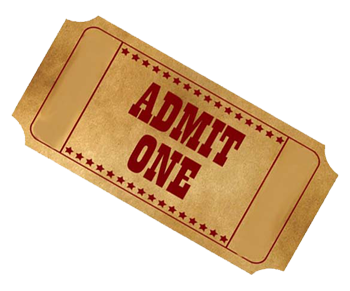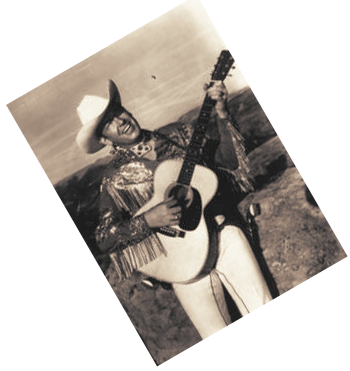



WILLCOX Cowboy Hall of Fame inductees
HOMER BYRD (62)
1900-1982
1999 COWBOY HALL OF FAME POSTHUMOUS AWARD
Homer Byrd was born in 1900 at Byrd, Texas, a crossroads village on the Pecan Bayou about 18 miles north of Brownwood, Texas. Homer's father, M.S. "Sheb" Byrd, moved his family in 1917 to Sunset, a community 40 miles northwest of Willcox on the eastern slopes of the Galiuro Mountains where public land was open for homesteading.
Young Homer soon got a job cowboying on the Sierra Bonita Ranch. Here he earned $40 a month plus room and board. He worked under such old time Sierra Bonita foremen as Rye Miles and Watt McCool. He worked there as well as other places before deciding to try it on his own. In the mid-twenties, he opened a barber shop in Solomonville, Arizona, approximately five miles east of Safford. At the same time, a ranching family from the Glenwood, New Mexico area, Walt and Mary Hollimon, opened a restaurant there. Homer ate there often as he was "smitten" by the Hollimon's daughter, Zelpha. They were married on November 2, 1926 in Safford. They had two sons, Homer Jr. and Walter Berl.
Homer and Zelpha got into cattle ranching on their own in the Sunset area shortly after their marriage. Homer Jr. recalls living in an old three room adobe house known as the "Turner Place." One night something fell from the ceiling on his and Berl's bed. That something turned out to be a large bull snake. Somehow the snake had scaled the walls of the house, found its way into the ceiling and fell through an abandoned chimney opening in the ceiling.
Homer worked hard in those early years of getting started. Times were hard and money was scarce. He did whatever it took to make an extra buck. Some of these things included cutting wood and posts for sale, raising and selling turkeys, driving a mail delivery route from Bonita to the Sunset community, breaking and training horses to sell or trade, and "dry farming" pinto beans and small grain crops. Homer and his brother Roy, who he later bought out, became partners and bought the Euell Collins place headquartered at Sunset where the Post Office was located. This was to become the "Home Place" for Homer, Zelpha, and boys.
October was market time for the calves and cull cows. Berl recalls the time in 1939 when these animals had been collected into a holding pasture. "Three days before sale date, Dad, Uncle Earl, Homer Jr. (age 10) and I (age 8) started the forty mile drive to the famous Willcox stockyards. Dad had the lead and regulated the speed of travel so the cattle would graze during the drive. We averaged fifteen miles per day. Mother would be at our nightly stopping locations with dinner and bed rolls. The first night out it rained, wetting down all the bedding and making it difficult to sleep. Later on the third day, the heard was placed in a small pasture close to the stockyards. On sale day the cattle were driven from the pasture to the stockyards. The calves were separated from the cows, segregated by sex and weighed. The steer calves sold for nine cents per pound and the heifers for seven cents per pound for an average of eight cents. The buyer took us all for drinks and lunch. We returned later to load the cattle on railroad cars. The return of the cows to the ranch only took two days because they were eager to get home."
Work was the order of the day. Berl recalls the time when his Dad rode one horse and led a packhorse into Willcox. The tiring 70 mile round trip, including shopping, took three days. The return trip carried groceries and a new rope. "A few days later while Dad was riding to check cattle, Homer Jr. and Monroe Bull were playing with the new rope and cut the new rope into short pieces with an ax. Needless to say, when Dad returned, the boys found out a new use for short ropes."
In the 1940's the family purchased the Morgan ranch about ten miles southeast of the home ranch. This included all livestock along with a two year old colt. According to Homer Jr., "Dad was a bronc rider. He was trying to break this little tough horse. We were riding to the Teal Ranch about ten miles and ten gates north. At gate number eight, Berl was down opening the gate. As Dad rode through the gate, the colt started bucking and threw Dad off. Dad took Berl's horse to catch the bronc. When they got back, Dad used a pigging string to tie his stirrups together. After a few bruises they got along the rest of the day. Dad rode this horse for some time, but did not always stay on. The horse was later sold.'
From the late 1950's until the early 70's when Homer and Zelpha moved from the ranch to Willcox for retirement, Homer was actively involved in buying cattle on a commission basis for his son, Berl, who managed several large feed yards in the Imperial Valley of California. Homer had a good eye for cattle and horses. He sold one of his first stallions for export to California, and owned the greatest heading horse operation of the times. He always had several good working cow horses, which were needed at the ranch, and for rodeos. He was a rodeo enthusiast and often participated with his sons in the local Sunday afternoon team roping in Willcox, and in rodeos throughout southeastern Arizona.
Over the years, several adjacent small ranches were acquired which made the ranch a productive economical unit. As the homesteaders moved out in the 20's and 30's for various reasons, mostly economical, their holdings were acquired by those who were able to survive those early years. Some of the small ranches acquired by Homer and Zelpha in addition to what was purchased from Homer's family and Euell Collins was the Lou Johnson place, the Joe Walderon place, the High Creek Forest Permit and holdings from the Sierra Bonita Ranch, the Bill Morgan place, which included holdings owned by John Teel, and finally the Bruce Bosley Ranch. The highlight of Homer's ranching career came in 1971 when he was named "Arizona's Range Management Man of the Year" by the Arizona Section of the Society for Range Management. This award is based on the use of good sound range management practices which Homer used in the operation of the Byrd Ranch. The combination of good range improvements, a process of deferred, rotational grazing, and good livestock management, were all contributing factors to his selection for this award.
In March of 1982, Homer moved from his home in Safford to the "Big Ranch in the Sky."





